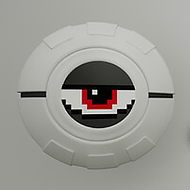
Click To Continue centers around fast decision-making and sequential interaction. Players progress through a chain of actions that require accuracy, timing, and quick interpretation of prompts. While the premise may sound simple, the deeper challenge lies in reacting efficiently to a continuous stream of visual and logical cues. The structure encourages players to balance instinct with focus, rewarding consistency over raw speed.
The foundation of Click To Continue rests on one principle — every action matters. Each click influences what follows, either unlocking new sequences or resetting your progress. This layered interaction encourages precision and memorization, as even small mistakes can interrupt a perfect chain. The player’s attention is constantly tested through subtle visual feedback and timing windows that shift with each stage.
These elements combine to create a system that measures both speed and comprehension. Successful play requires steady rhythm and awareness rather than reckless clicking.
As players advance, the tempo and complexity of Click To Continue increase. New mechanics appear, such as multitasking sequences or misleading prompts designed to test reflexes and focus. The higher levels reward memorization and adaptability, introducing randomized obstacles that force constant recalibration of reaction timing.
This gradual evolution transforms the experience into a rhythm-based challenge of memory and precision. Each success feels earned through both mental and physical coordination.
To maintain long sequences, players should develop rhythm awareness and anticipation. Reacting predictably often leads to mistakes, as timing varies with every transition. Instead, focus on reading cues and building internal timing through observation. The game rewards players who stay adaptable and patient.
Mastery in Click To Continue is about repetition and focus. With time, players develop a sense of natural synchronization that keeps progress steady and reduces errors.
Click To Continue transforms simple actions into an engaging rhythm-based test of focus. Each click represents a balance between reaction and patience, rewarding players who learn control and consistency over impulsive movement.